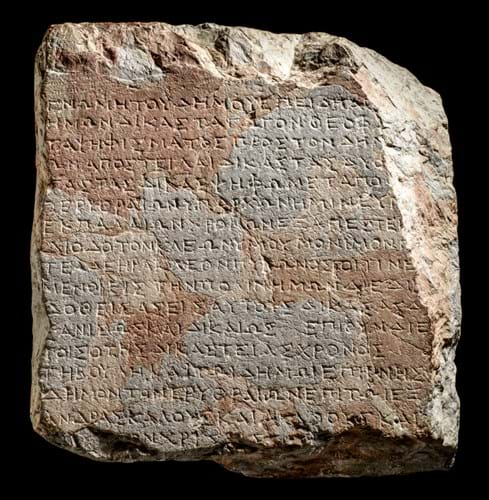
The relief, from the first half of the second century BC, had been given by an English diplomat living in Munich to a German scholar and his English wife when they married in 1958.
The diplomat, who had lived in a house that a Nazi officer had lived in during the war, gave the marble from the house to the couple after making enquiries with the German authorities. He was told at the time that the state had no claim on it.
Public display
The couple returned to England in the mid-1980s with the marble but felt that the relief should one day go on public display in a museum.
Following discussions with Dr Georgy Kantor of St John's College, Oxford and London antiquities dealers Oliver Forge and Brendan Lynch, the artefact was traced to that belonging to a museum in Munich in the late 19th century. Following this discovery it was agreed it should be returned.
The stele is from Erythrai, one of the Ionian cities in Asia Minor, and was discovered by an archaeologist there between 1852-57. It was then taken to Munich where it was acquired after 1866 by the Royal Antiquarium, the previous name of the Staatliche Antikensammlungen und Glyptothek, which holds Bavaria's collections of Greek and Roman antiquities.
The widow of the couple has now given the artefact to the museum and it will go on show at the Staatliche Antikensammlungen und Glyptothek when it reopens in 2020.





